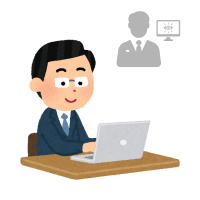In the ever-changing business environment of today, handling top talent is more challenging than ever before. Retaining the talent to enhance the organization’s growth productivity and efficiency is now a new headache for the CEO. One of the biggest fears nowadays in this direction is Quitting. This is a phenomenon where employees use their mental Acumen to see where their career is going and in which direction the current role is taking them. Without directly expressing their discontent they quit the organization.
Understanding Quiet Quitting
Quiet Quitting can be defined in various definitions but the easiest one is quiet quitting is a phenomenon when the workforce is disengaged from the work they are doing and leave the organization without even expressing their dissatisfaction or letting the management know that they are not happy or have any kind of concern, this is different from a formal resignation.
Employees who are experiencing the signs of quitting can be physically present in observation but they are emotionally and mentally disconnected from the roles of the profiles they are working for and since they are not able to perform their responsibilities. These are the early stage signs of quitting and knowing them is very important for employers because if you see these signs and you see someone is facing the signs you can dig deep and find the reason to address the issue before it’s too late.
There Can be Various Causes for Quite Quitting Some of Them Are:-
Lack of Recognition and Appreciation
It’s a very simple and widely known fact that if a person feels that their efforts go unnoticed and unappreciated it’s more likely that that person will be disengaged as we all know that appreciating, recognizing, and celebrating achievements no matter how small or big this fosters a positive environment and reinforces the value of each team member and every team member feels that they are important and they are integral part of the team(organization).
Poor Communication
Another thing that contributes to quitting is poor communication. In any relationship, work culture ineffective communication leads to misunderstandings, a sense of disconnect, and a state of confusion. Regular and transparent communication with the leadership is very important. This provides us with clarity on the organizational goals, the job description of individuals, what is expected from them and gives an idea of the organization’s overall direction and growth trajectory.
Limited Growth Opportunity
This is a very important aspect and most of the CEOs and the people in management overlook this. If a person is working for any position they will seek opportunities for professional development and career advancement, when they see the opportunities are limited, they lose motivation because they have this mindset that they do not have a growth opportunity here they should just quit and go to some other place.
Hence running regular mentorship programs, and training programs helps in this direction the workforce should have a clear path in front of them, they should know the growth opportunities are there, and they should be well aware of their increment cycles and the increment parameters. This helps us in mitigating this issue
Inadequate Work Life Balance
In this world of Hustle and rush balancing work and personal life is very important for the well-being of the organization and of the workforce, we have all seen that in organizations that promote work-life balance by providing flexible work schedules, hybrid work options and various other Wellness programs, the employees are more satisfied and more engaged.
Lack of Autonomy
We have often heard that no one likes the manager and micro-management is the killer of creativity and innovation. It makes the employees feel they are being bothered, and an environment of lack of trust develops. Understand that when you empower your people with autonomy they have a sense of ownership and responsibility which indirectly increases their engagement in their roles and Organization. Now they are not renters, they are owners.
Make Your Workday More Productive
Time tracking and work management can help you reach your goals faster.
Try 15 Days for Free

Some Strategies to Boost Employee Engagement and Avoid Quite Quitting
Implementation of Employee Productivity Monitoring Software
Tools like DeskTrack which are mainly employed for monitoring productivity provide valuable insights into work patterns, productivity levels, and areas of improvement, and this data can be widely used to identify potential issues and Taylor engagement strategies accordingly.
Open Communication
A culture of open communication should be promoted and established where everyone feels free and comfortable in expressing their concerns and ideas. There must be regular feedback sessions, Town Hall team meetings and one of the most famous ways is anonymous suggestion boxes to facilitate two-way communication between the leadership and the employees
RNR Programs
Rewards and recognition programs are very important in any organization. People feel motivated and they perform better when they know they will be rewarded and they will be recognized for the hard work they put in.
A very sound recognition and rewards program motivates employees and makes them feel valued, outstanding performance should be recognized publicly through rewards or shout-outs in the meeting or by giving the employee of the month award.
Growth Opportunities
Employees should see that the organization is investing in the growth of their workforce by providing them and arranging training programs, workshops and skill development sessions.
This not only enhances their capabilities but also tells them that it is a commitment of the organization for their long-term success in the organization.
Flexible Working
The organization should promote a work-life balance by offering flexible work arrangements, remote work options, and flexible hours. When you provide flexibility to your workforce it demonstrates your trust towards the workforce and it makes them feel that you understand their needs and their well-being.
A Positive Company Culture
A positive company culture should be there in an organization which includes promoting diversity and inclusion. Teamwork and a work environment that is supportive when everyone feels a sense of belonging.
Regular Performance Reviews
Regular performance revision should be conducted with different teams, departments, and the whole organization so that constructive feedback has been provided to people and clear Expectations have been set that ensures that every person understands their roles and contributes to the organization’s success.
Conclusion
Preventing and understanding quite quitting is a holistic approach it should match the needs of the organization and the needs of the employees together. By recognizing the signs of disengagement early and implementing strategies that promote a positive work environment organizations not only retain their top talent but also sustain growth and success.








